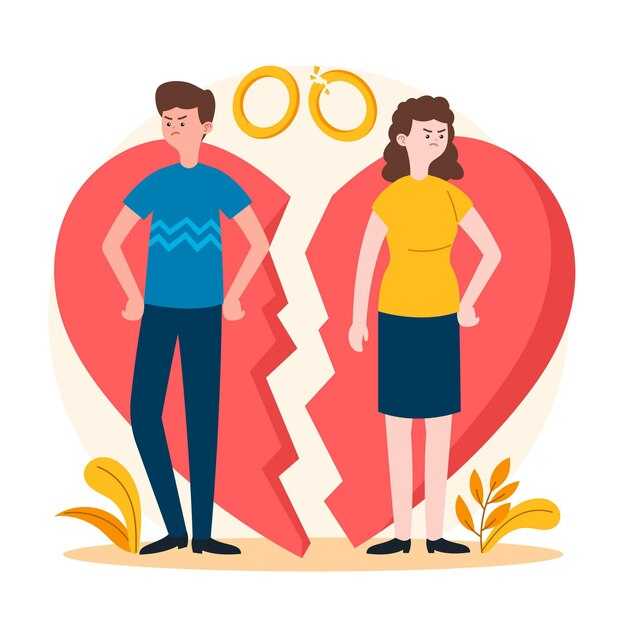Almost nobody notices this, but if your life becomes a pattern of chasing people who don’t return your feelings, refusing to commit while you keep pursuing them, guess who the avoidant one is — it’s often you. Even when their rejection devastates you and you ache for them afterward, there’s a part of you that knows, on some level, the relationship could never truly work. Paradoxically, that knowledge can make it easier to pour out your whole heart: loving someone who’s unavailable can feel intense and intoxicating, yet because the relationship can’t fully form your options remain open. You never feel trapped, and the persistent sorrow of not being genuinely loved can become a kind of familiar comfort — a blanket that keeps the chill of real choices and risks at bay. That, in essence, is avoidance. So what happens after years of that pattern when a reciprocal, committed love finally appears? Today’s letter comes from a woman who calls herself Remy. Her note begins, “Dear Anna,” and reads like this: she felt emotionally neglected and profoundly alone as a child and adolescent, growing up in a tiny village without friends. Her parents’ long silence and fights ended in a divorce when she was fifteen, and by eighteen — desperate to escape the loneliness — she booked a one-way ticket to another country on another continent. It was the simplest and best decision she ever made: she finally felt free and able to rebuild her life. She experienced her first romantic relationship there and fell in love, but that first romance ended after two years, leaving her heartbroken and adrift. During that low period she met someone special, whom she calls Matias. They fell for one another and he wanted a full commitment, but still raw from her breakup and overwhelmed by his affection, Remy asked to remain friends. They became very close friends, seeing each other frequently, talking about everything, and exchanging long emails because they both loved writing. After a while she began to chase another man she’d met at university. They dated and liked each other, yet he soon admitted he wasn’t interested in a committed relationship. She accepted that and continued to see him casually for about two years, while he also saw other women. Eventually he became exclusive with someone else and moved in with her. Matias was crushed that Remy chose to pursue a man who did not want a serious relationship; after that their in-person contact dwindled to occasional meetings, though their correspondence persisted. Years passed in a repetitive cycle of pursuing one avoidant partner after another. At the time, Remy didn’t understand her behavior and felt like a victim — crying and believing no one wanted a real relationship with her. Later she left the country again, dated casually for a while, and then entered a long-term partnership with someone she calls Linus. Linus wanted a girlfriend but resisted labels; during the first three years he never said “I love you,” and he refused to move in together because of perceived instability in their relationship and the demands of his PhD. After five years she ended that relationship. All the while she kept wondering why she wasn’t being truly loved, and she kept pursuing men who had made it clear early on they didn’t want anything deep or lasting. Eventually Remy came to a painful insight: she was actually afraid — afraid of loving deeply and of being loved deeply, because deep love opens the possibility of hurt, abandonment, and suffering. Being with avoidant partners felt safer: they didn’t demand much and their distance guaranteed she knew what to expect. Staying in that victim role allowed her to complain about how men were unfair and to avoid facing her own fear of intimacy. Throughout all this, Matias remained in her life through letters. They met in person only once, about five years earlier, when she visited his country. Otherwise they wrote for more than a decade, sometimes going weeks or months without contact, other times exchanging daily messages — sharing joys, supporting each other through hard times, and missing one another. Over time the correspondence deepened into a bond that has endured and transformed both of them. Now, after more than ten years of writing and loving from afar, they feel different people, and both seem ready to try again. They live on different continents, so practical issues must be sorted if they decide to be together, but they both want marriage, to live together, probably children, to grow old side by side, and to be there for each other. These hopes bring great happiness—and also intense fear. Remy worries she might actually be the avoidant partner in this pairing: Matias was always straightforward about wanting her, and she kept him at a distance because that degree of love felt overwhelming. Determined to do things differently this time, she asks for advice: how can someone who has spent years choosing avoidant partners — because that felt like the safe option — let go of the fear that real love is too big and terrifying? How can she allow herself simply to receive and savor it without shutting down or running away? This is a beautiful situation and a remarkable type of love: a friendship that has slowly strengthened over years, like an oak deepening its roots. That kind of long-standing emotional intimacy is rare and precious, and when it includes romance and sexual attraction it can be doubly wonderful. The pattern Remy describes — feeling that someone’s intensity is “too much” and being inexplicably activated by withdrawal — is common. Often people mistake the pull of distance and the drama of pursuit for romance, when what’s happening is a distortion of normal courtship dynamics. Courtship naturally involves a subtle ebb and flow — one person reaches out, the other steps back, then the first moves forward again — and that push-and-pull is what many classic love stories, like Pride and Prejudice, celebrate. The slow, steady bond built through years of friendship and honest emotional exchange is the kind of love most likely to endure. A few practical suggestions follow. First: don’t rush into cohabiting as soon as you’re in the same country. Keep a separate place for yourself so you can spend time together and still retreat when feelings become overwhelming. Having that physical option prevents impulsive flights or hostile reactions that often arise from feeling cornered. Second: create additional outlets for your feelings. One person — even the one you love — shouldn’t be the only repository for everything you experience emotionally. Seek support from a therapist, a trusted friend, a support group, or a community that discusses these matters regularly. Many people find structured help in therapy or through high-quality self-help books; others find ongoing support in groups or membership programs that focus on relationship work. Information about such resources is often listed in the description area connected to this conversation. Working through avoidance is vital soul work: it means learning not to push away or flee from the very intimacy you desire. Take things slowly and let the relationship unfold as an actual courtship rather than assuming a fairy-tale instant solution. Be gentle with yourself, give the partnership time to grow, and build practices for managing fear when it arrives — stepping back to breathe, talking with a therapist, journaling, or checking in with a close friend. Finally, there is a downloadable guide called “How to Prepare for a Great Relationship” available for anyone who wants concrete steps to follow; a link to that resource is typically provided in the description. Let the courtship begin, allow the love in while it lasts, and take care to keep both feet on steady ground. [Music]
Concrete practices to help you stay
When fear of intimacy or the urge to flee appears, having a concrete plan reduces reactivity. Try these practices:
- Pause and anchor: Stop for 30–60 seconds. Breathe slowly (count 4 in, hold 2, out 6). Name what you feel aloud or in writing — “I’m noticing fear/overwhelm/sadness.” Naming reduces intensity.
- Ask one question: Instead of acting, ask: “What do I need right now that would be safe?” Options might be a short break, a hug, a walk, or a phone call with a friend.
- Use a short script to buy time: If you feel like withdrawing or shutting down, say something like, “I’m feeling overwhelmed and need 20 minutes to breathe. Can we pause and come back to this?” This signals your need without abandoning the relationship.
- Set tiny experiments: Practice staying present in small doses — sit through one emotional conversation without leaving, accept one act of care without deflecting, or spend a weekend together with your own sleeping space. Track what you learn.
Communication tools

Honest, calm communication builds trust and prevents misunderstandings. Use these simple tools:
- I-statements: “I feel scared when things get serious because I worry I’ll mess it up.” Focus on your internal experience rather than blaming.
- Vulnerability script: “I want to be close to you and I also get scared. When I pull away, it’s my fear, not a reflection of you. I’m working on it and would love your patience and support.”
- Regular check-ins: Schedule a weekly 20–30 minute conversation about how you’re both feeling — not problem-solving, just sharing emotional weather.
- Safe word or signal: Agree on a word or gesture to use when one of you feels overwhelmed and needs a respectful pause without escalation.
Practical planning for long-distance and moving together
When a relationship must cross continents, practical planning reduces anxiety and creates structure:
- Timeline and milestones: Map a realistic timeline for visits, work/visa steps, trials of cohabitation, and decision points (for example, meet for three consecutive months, try three months living in one city, etc.).
- Separate space initially: Keep your own apartment for the first months after moving so you can rest alone when needed. This helps prevent feeling cornered and reduces impulsive departures.
- Financial and legal checklist: Discuss finances, employment, immigration/visa plans, and housing before moving in. Clarity reduces stress later.
- Trial periods: Agree to revisit living arrangements at specific intervals (3, 6, 12 months) and assess what’s working, rather than treating cohabitation as all-or-nothing.
Therapy and resources
Professional and structured support accelerates change and makes fears manageable:
- Therapy types to consider: Emotionally Focused Therapy (EFT) for couples, attachment-based therapy, trauma-informed therapy, CBT for anxiety, and EMDR if you have trauma. Individual therapy plus occasional couples sessions can be a strong combination.
- Books that help explain patterns: Attached (Amir Levine & Rachel Heller) — for attachment styles; Hold Me Tight (Sue Johnson) — for couples and bonding; The Power of Attachment (Diane Poole Heller) — for healing attachment wounds. These are starting points, not substitutes for therapy.
- Réseaux de soutien : Trusted friends, peer groups, or online communities that focus on attachment, relationships, or personal growth can provide perspective and accountability.
Practical relapse plan (what to do if you try to run)
Relapse into old patterns is common and not a sign of failure. Have a plan:
- Immediate step: If you feel like leaving, use your script to pause and explain the need for space. Commit to a time when you’ll reconnect (e.g., “I need two hours. Let’s talk at 7pm.”).
- Repair approach: After a flight or withdrawal, acknowledge it without defensiveness: “I ran because I was scared. I’m sorry. I want to explain and hear you.” Keep apologies brief and focused on repair.
- Reflect and learn: Journal what triggered the urge and what helped or didn’t help. Use that information in therapy and check-ins.
Daily habits to build your capacity for closeness
- Practice 5–10 minutes of mindfulness or breathwork daily to reduce baseline anxiety.
- Share one small appreciation with your partner every day to strengthen positive affect (“I loved our walk today; it felt close”).
- Keep a “vulnerability log”: once a week, write one moment where you were vulnerable and what happened. Track patterns of safety and rupture.
- Schedule regular self-care (exercise, sleep, social time with friends) so the relationship isn’t your only source of emotional regulation.
Signs you are truly changing (and what to watch for)
- You can sit with uncomfortable feelings longer without automatically leaving or shutting down.
- You ask for what you need directly instead of expecting the other to read you or punishing them with distance.
- You notice patterns early and can tell your partner about them before they explode into action.
- When you do pull away, you come back and repair rather than disappearing permanently.
Final note
Healing avoidant patterns is gradual. It’s not about erasing fear but learning to tolerate and communicate it. Small experiments, steady support, clear plans, and gentle accountability allow you to receive love without being overwhelmed by it. Be curious about yourself, celebrate incremental progress, and get help when the work feels too big to do alone. This kind of long-term, rooted love is worth the effort — and you don’t have to prove you deserve it by running away.


 What to Do When You Feel Like Running Away">
What to Do When You Feel Like Running Away">

 Avoidants Only Form Lifelong Bonds with THIS Type of Partner (Here’s Why)">
Avoidants Only Form Lifelong Bonds with THIS Type of Partner (Here’s Why)">
 Why She Stopped Touching You">
Why She Stopped Touching You">
 Childhood Trauma Drives You to ATTACH to People Who Can’t Love You">
Childhood Trauma Drives You to ATTACH to People Who Can’t Love You">
 How to Communicate without them feeling Attacked!">
How to Communicate without them feeling Attacked!">
 12 Super Specific Signs That Your Childhood Was Extremely Damaging">
12 Super Specific Signs That Your Childhood Was Extremely Damaging">
 When An Avoidant Acts Like THIS, They’re Truly Faithful For Real">
When An Avoidant Acts Like THIS, They’re Truly Faithful For Real">
 Comment savoir si votre mariage va échouer.">
Comment savoir si votre mariage va échouer.">
 I Neglected my Relationship.">
I Neglected my Relationship.">
 You don’t deserve to be ABUSED! || Narcissism is abuse">
You don’t deserve to be ABUSED! || Narcissism is abuse">
 The One Thing You MUST Say to Avoidants… Before They Disappear for Good | Avoidant Attachment Style">
The One Thing You MUST Say to Avoidants… Before They Disappear for Good | Avoidant Attachment Style">